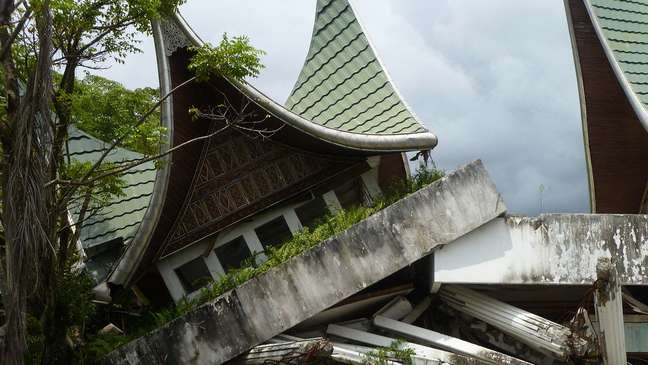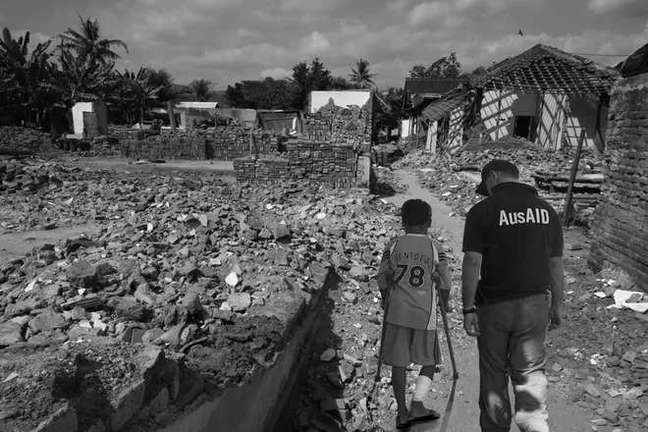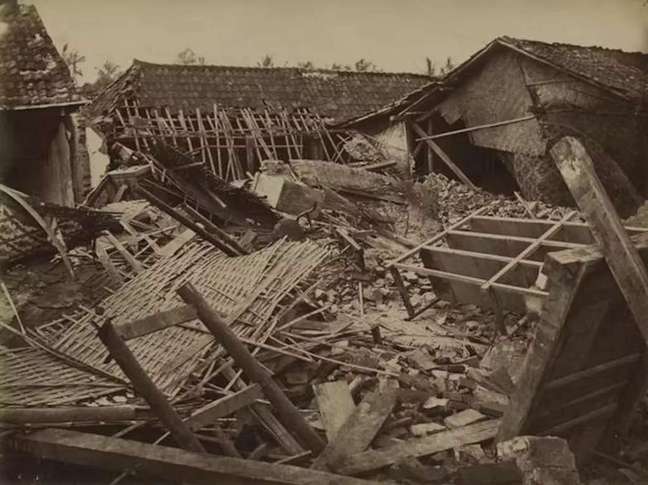The earthquake that hit Indonesia had 21 times less energy than a 2017 event, but caused more damage because it was closer to the surface
In November of this year, an earthquake measuring 5.6 caused more than 250 deaths and damaged about 22,000 buildings in Java, in Indonesia. But why was an earthquake weaker than others that hit the country more disastrous? The answer lies in its depth.

- ‘Hidden’ South Atlantic earthquake generated global tsunami in 2021
- Evidence of the largest earthquake in history is found in northern Chile
The event that shook the city of Cianjur in the Asian country had its epicenter at a depth of 10 kilometers below the earth’s surface. This distance affects as much as the magnitude of the earthquake itself.
Despite affecting a larger area, the strongest earthquakes more than 50 kilometers deep tend to cause less damage. This is due to the weakening of seismic waves on their way to the surface. The same island in Indonesia suffered a 6.5-magnitude earthquake in 2017. Its 90-kilometer depth, however, left four dead and 4,800 homes damaged.
The intensity of the earthquakes
The energy release from an earthquake is measured using logarithmic magnitude scales, i.e. a 1 degree difference between earthquakes represents many times more energy. In the case of the two earthquakes mentioned in Indonesia, the one in 2017 released 21 times more energy than the one in 2022.

The best-known scale was created by seismologist Charles Francis Richter in 1935 and bears his surname. However, today the Richter scale is no longer the most used, mainly because it loses accuracy for earthquakes greater than 8 degrees. It gave way to the moment magnitude scale, established in 1979. Despite this, earthquake magnitude is still commonly referred to as “degrees on the Richter scale”.
There are also so-called intensity scales, which are based on people’s perception and assessment of the damage caused by the earthquake. This is the case with the modified Mercalli Scale, based on the proposal of the Italian volcanologist Giuseppe Mercalli in 1902. Last month’s earthquake falls under the “severe” intensity classification of this scale. In 2006, the Yogyakarta earthquake reached the “extreme” level of this scale.
How dangerous are shallower earthquakes?
Shallow earthquakes have been rarer than deeper ones. While that may sound good, the fact is that they can happen at any time and people are less warned about this type of event.

During the 20th century, only one shallow earthquake struck the island, killing nearly 800 people in 1924. In 2006, the Yogyakarta earthquake with a magnitude of 6.4 and a depth of 10 kilometers caused 5,749 deaths.
The island’s colonial-era records, however, show that this type of earthquake was more frequent—at least nine have occurred since 1865. The problem is that they can repeat themselves and people and buildings are not prepared for it.
The typical response of authorities in earthquake-prone areas is to enforce stricter building codes regarding the resilience of houses and buildings. The problem for Indonesia to prevent shallow earthquakes is that the hole is much deeper: the country already has an updated code, but the high level of poverty in the country prevents the vast majority of people from being able to comply with it.
Source: The conversation
Trending on Canaltech:
- Analysis of the 550-year-old letter could reveal the secrets of Vlad Dracula the Impaler
- 7 Weird Places on Google Earth
- 10 cars that left the line in Brazil in 2022
- Which animal species has been alive the longest on Earth?
- HBO Max Releases for the Week (12/14/2022)
🇧🇷The best content in your email for free. Choose your favorite Terra newsletter. Click here!
Source: Terra
Camila Luna is a writer at Gossipify, where she covers the latest movies and television series. With a passion for all things entertainment, Camila brings her unique perspective to her writing and offers readers an inside look at the industry. Camila is a graduate from the University of California, Los Angeles (UCLA) with a degree in English and is also a avid movie watcher.



![New Day ahead: Tera discovers an incredible truth about Gabriel and Audrey … which is waiting for you from the week of 2025 to 18, July 18, 2025 [SPOILERS] New Day ahead: Tera discovers an incredible truth about Gabriel and Audrey … which is waiting for you from the week of 2025 to 18, July 18, 2025 [SPOILERS]](https://fr.web.img5.acsta.net/img/b6/e5/b6e5ddee257bc9a8ae5bb9587db6efc3.jpg)


